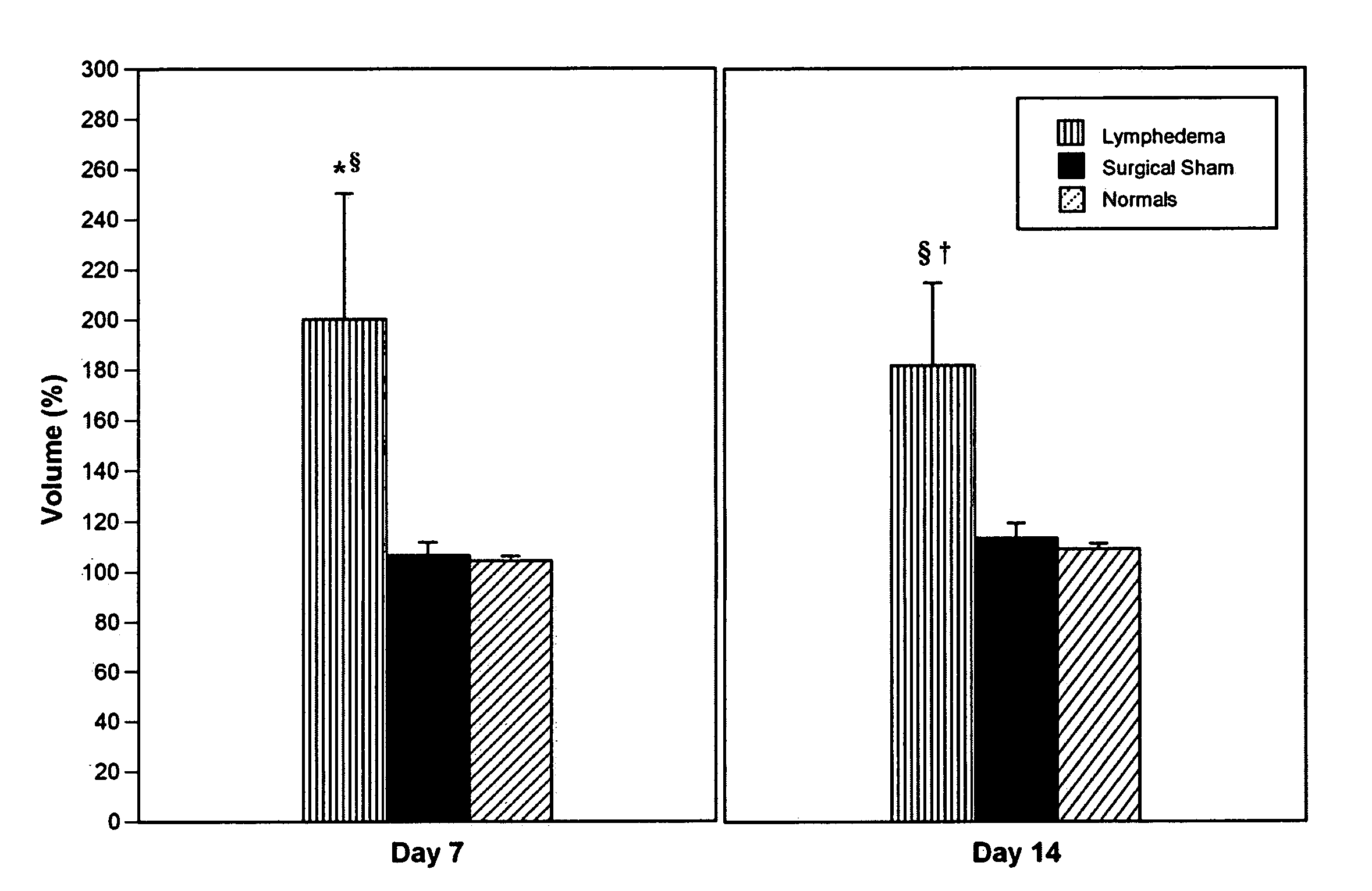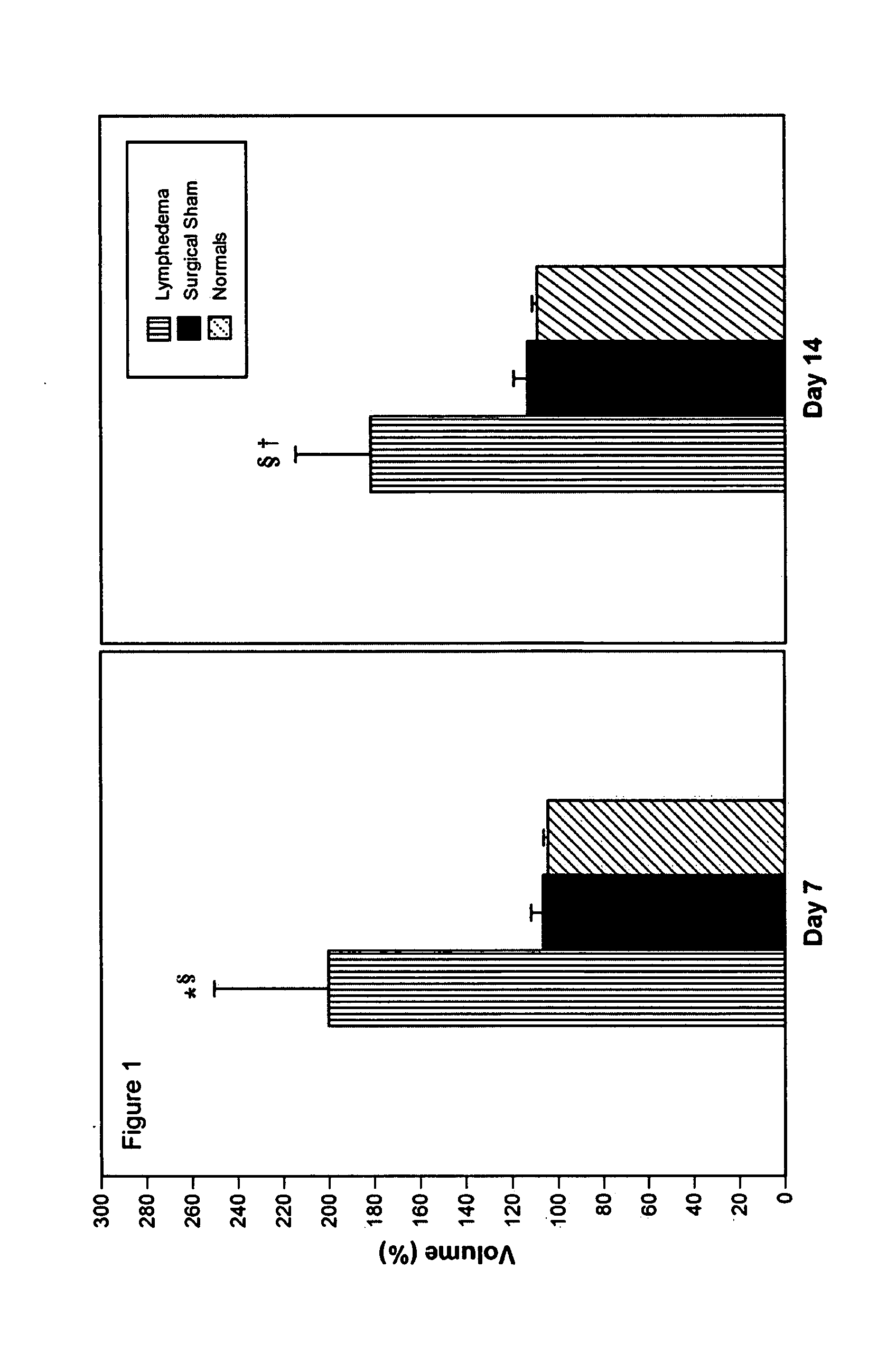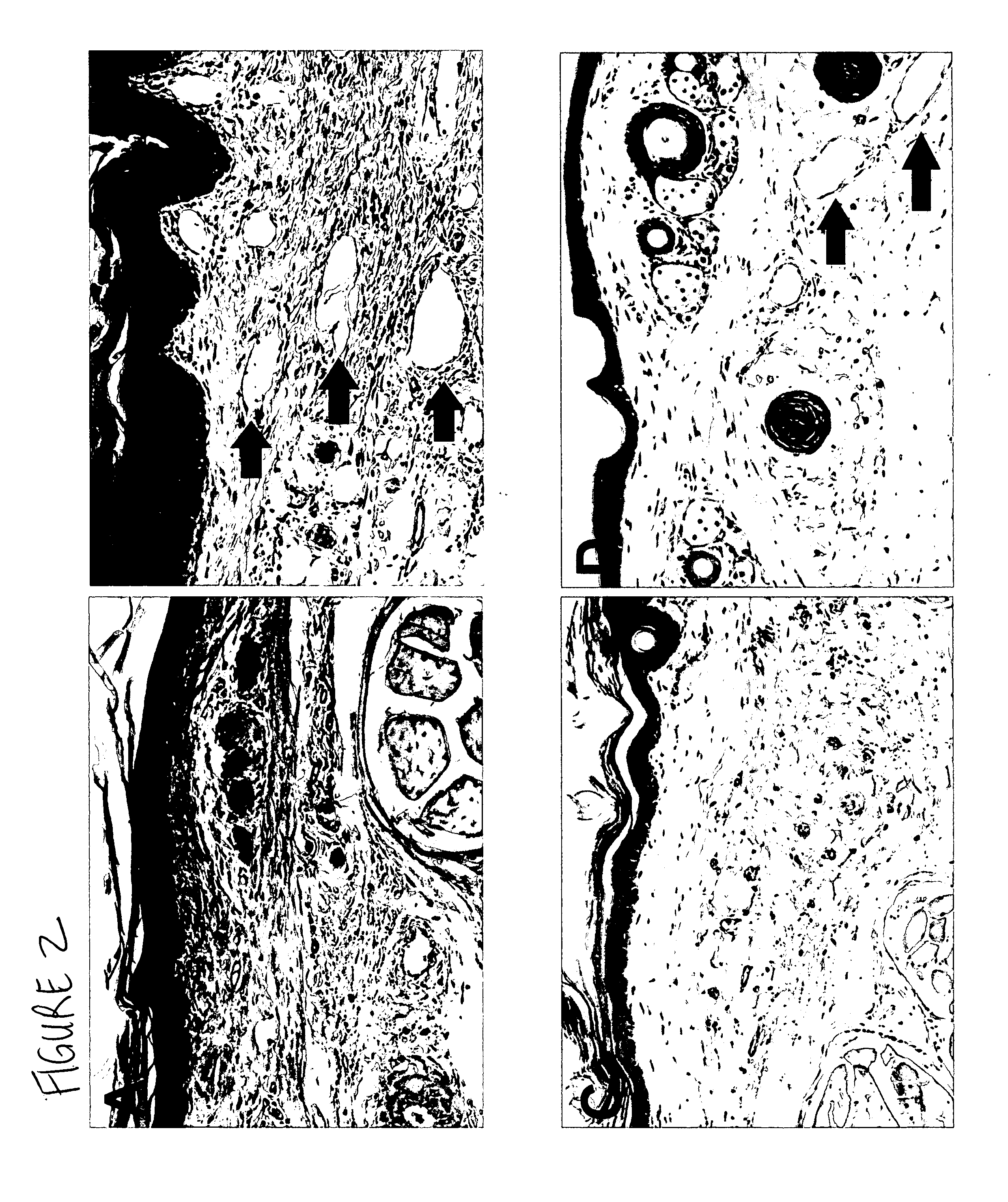Lymphedema associated genes and model
a lymphedema and gene technology, applied in the field of lymphedema associated genes and models, can solve the problems of fibrosclerotic tissue production, reversal of flow, and stagnation of high molecular weight proteins in the interstitium,
- Summary
- Abstract
- Description
- Claims
- Application Information
AI Technical Summary
Benefits of technology
Problems solved by technology
Method used
Image
Examples
example 1
[0169] Transcriptional profiling has been utilized in the molecular characterization of isolated lymphatic endothelia but the molecular end-organ response to lymph stagnation remains un-addressed and poorly understood. An elucidation of whole tissue response to disease can provide insights into the important interactions between the tissue matrix and the resident, heterogeneous cellular populations that comprise the target-organ response to persistent lymph stagnation.
[0170] To investigate the tissue responses to lymphatic vascular insufficiency, we have therefore undertaken dynamic, in vivo imaging of the impaired immune traffic in a murine model of acquired lymphatic insufficiency that simulates the lymphatic dysfunction of post-surgical lymphedema. These observations were correlated with an assessment of the cutaneous histopathology in the lymphedema tissue.
[0171] To investigate the molecular mechanisms of tissue response to lymphatic vascular insufficiency, a large scale trans...
example 2
[0206] Natural History of Lymphedema
[0207] Evaluation of the efficacy of molecular treatment strategies for lymphatic vascular insufficiency requires a suitable preclinical animal model. Ideally, the model should closely replicate the untreated human disease in its pathogenesis, biology, and natural history. Acute post-surgical lymphedema was experimentally created in the mouse tail and contrasted with the effects of exogenously administered human recombinant VEGF-C.
[0208] Quantitative assessment of immune traffic function was performed through sequential in vivo bioluminescent imaging. In untreated lymphedema, tail edema was sustained until day 21. Exogenous administration of human recombinant VEGF-C produced a significant decrease in volume. Untreated lymphedema in the mouse tail was characterized by the presence of dilated cutaneous lymphatics, marked acute inflammatory changes, and hypercellularity; VEGF-C produced a substantial reversion to the normal pattern, with notable re...
example 3
Treatment of Lymphedema with Nonsteroidal Anti-Inflammatory Agent
[0233] As indicated by the above experimental data, interruption of inflammation may ameliorate the tissue response to lymphatic disruption. Studies were therefore performed to test the response to the administration of a systemic non-steroidal anti-inflammatory (ketoprofen) in the mouse model system. Ketoprofen was administered subcutaneously into the skin over the abdominal wall, 5 mg / kg daily, from post-operative say 3 through day 18. Control animals received subcutaneous injections of vehicle only. The surgical lymphedema animals treated with ketoprofen (n+12_had a significant reduction in the edematous response (P<0.02). As observed previously, the lymphedema H&E specimens showed dilated dermal lymphatic vessels, marked acute inflammatory changes, and an overall increase in cellularity. Surgical sham controls were indistinguishable from normals.
[0234] The ketoprofen-treated lymphedema specimens demonstrated subs...
PUM
| Property | Measurement | Unit |
|---|---|---|
| Volume | aaaaa | aaaaa |
| Mass | aaaaa | aaaaa |
| Mass | aaaaa | aaaaa |
Abstract
Description
Claims
Application Information
 Login to View More
Login to View More - R&D
- Intellectual Property
- Life Sciences
- Materials
- Tech Scout
- Unparalleled Data Quality
- Higher Quality Content
- 60% Fewer Hallucinations
Browse by: Latest US Patents, China's latest patents, Technical Efficacy Thesaurus, Application Domain, Technology Topic, Popular Technical Reports.
© 2025 PatSnap. All rights reserved.Legal|Privacy policy|Modern Slavery Act Transparency Statement|Sitemap|About US| Contact US: help@patsnap.com



